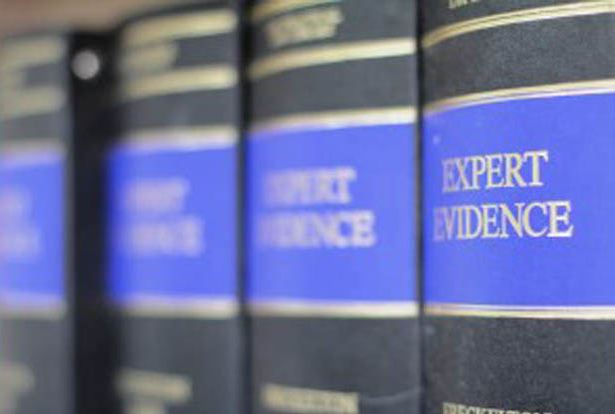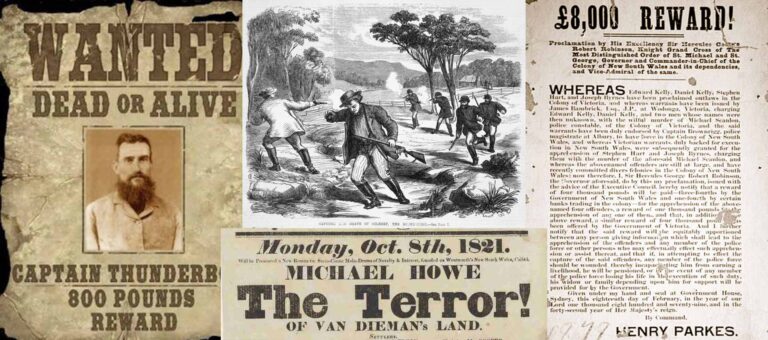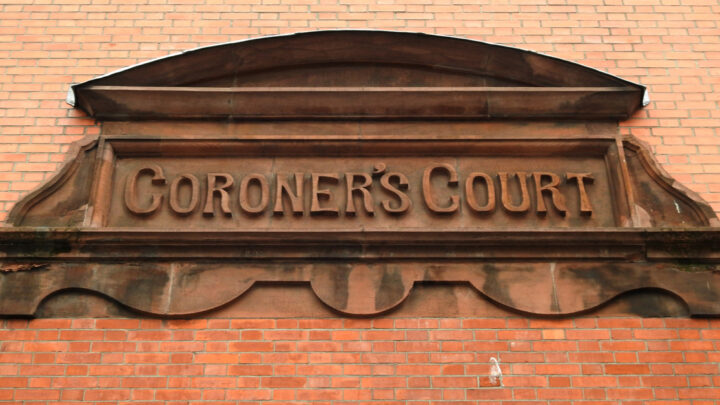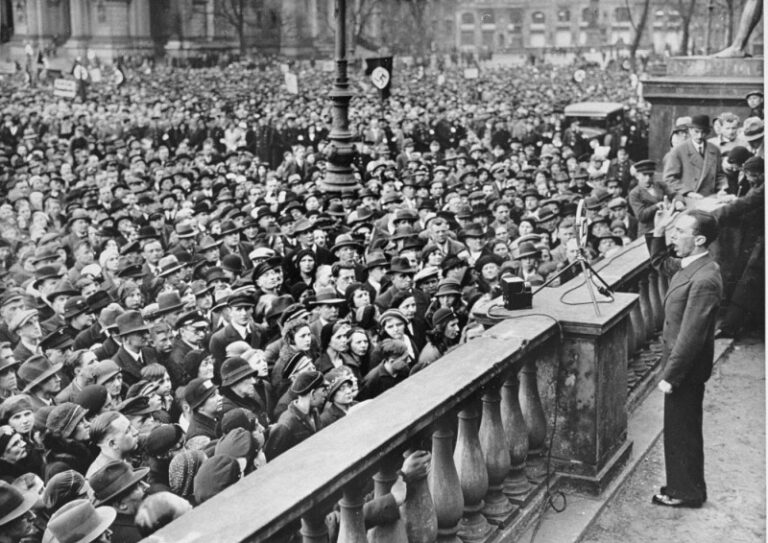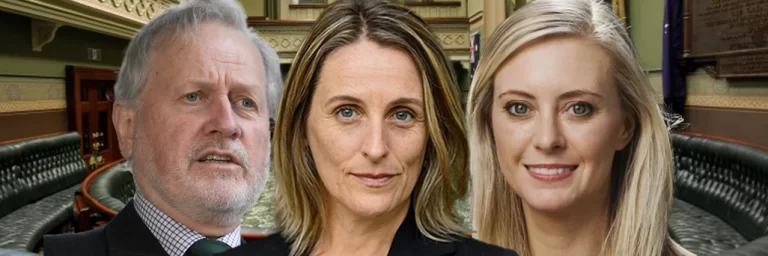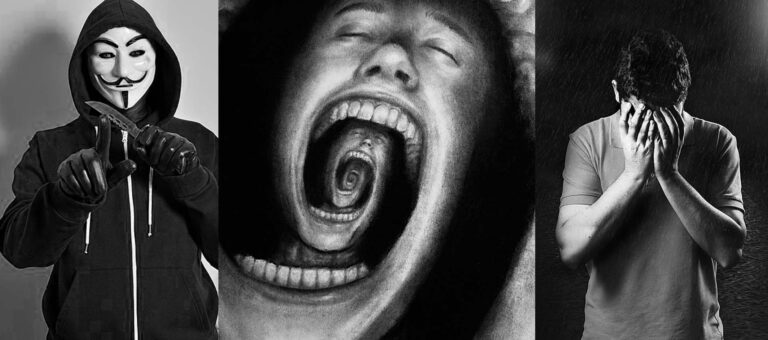Expert Evidence Part 1: A Short History of Expert Evidence
Table of Contents
Expert evidence plays a key role in the decisions of courts every day across the world. In some cases, experts provide knowledge and information integral to the outcome of the judicial decision. However, experts have not always played a role in legal decision making, and this article traces the history of expert evidence, the problems and solutions developed over the last few hundred years.
Origins – The Mansfield Decision
It is a widespread practice to use experts in a wide array of court cases. It makes sense – if there is a question that is better answered by an expert, why not ask an expert? Using experts to provide opinion evidence has been a practice since the 1600’s. In 1678 a doctor was used in a murder trial[1] and the practice of using party-called experts became commonplace in civil trials over the next one hundred years. However, in 1783, Folkes v Chadd[2] was the first case which addressed the value of this ‘new ‘class’ of witness, the scientific expert and is known as the Mansfield decision. A comprehensive analysis of the case has been provided by Golan[3] however it can be briefly summarised as follows:
A local authority sought to have a local commercial farmer reverse the constructed embankments which had been blamed for damaging the harbour over a number of decades. In the first trial, the authority used a number of local people to report their experience who commented on their knowledge of the harbour and what they had observed since the erection of the embankments. The farmer took a different approach and used a recognised scientific expert to make his case that there was no relationship between the deterioration of the harbour and the embankments. The farmer won the trial, but it was appealed on the basis that the authority claimed that they were not provided with an opportunity to respond to the expert report. The appeal was prepared for by both sides who each had genuine scientific experts to support their assertion and these reports were available to both sides and the jury before it was heard in court. At the last minute though, the authority sought to reject the opinion of the expert because it was not based in mathematics but represented an opinion that was difficult or impossible to prove. On the third and final occasion the matter was heard in court, the dominant consideration for the judge was how to correctly value the opinion of the expert.
Ultimately, Lord Mansfield said,
“Of this, such men as Mr. Smeaton alone can judge. Therefore, we are of opinion that his judgment, formed on facts, was very proper evidence.”[4]
While ‘experts’ had been used previously, they were either non-scientific and referred to as people who had some knowledge of the situation, or, they had scientific knowledge but had significant numbers and measurements to support an opinion. The Mansfield decision was the first to set a rule for a new class of witness, someone who was regarded as an expert and was able to provide an opinion without necessarily being involved with the facts of the matter.
Partisan Experts
The decision in Folkes v Chadd opened the door for scientific experts to be used to provide opinion evidence, and it was not long before this practice was common. However, it was notably a partisan approach – each side calling their own experts. The judiciary did not concern themselves with the risk of experts becoming part of the adversarial process and instead, counted on “men of science to give, by ties of honour, unbiased opinions on matters beyond the ken of the jurors.[5]”
Over the next century, the use of experts grew and became a normal part of the evidence provided to courts as the experts assisted the court and jury to better understand complex scientific matters. However, this was not smooth sailing as the partisan approach led to difficulties for experts trying to walk a fine line between the needs of their profession and those that hired them to provide opinions that supported a particular view of the case. Experts did become part of the adversarial process.
As a result, the reputation of experts began to decline. In some cases, teams of experts from both sides provided completely contradictory evidence which created problems for courts and juries who could not distinguish between the contradictory expert opinions.
Severn, King and Co. V Imperial Insurance Company
The problems continued and in Severn, King and Co., Lord Chief Justice Dallas expressed his frustrations with the incomprehensibility of so-called expert opinion evidence. This was a case in which both sides chose to use long lists of so-called experts to provide opinion supporting both sides of the case. However, the opinions did not assist the court in reaching a decision.
Lord Chief Justice Dallas expressed it thus:
“I have myself read the works of some of them, had derived pleasure from their labours, and entertained the greatest respect for their talents and information. But they had, nevertheless, left the Court in a state of utter uncertainty; and the two days during which the results of their experiments had been brought into comparison, were days, not of triumph, but of humiliation to science.”[6]
Nonetheless, the trial led to a decision, but this was appealed by the losing side on the basis that not enough weight had been placed on the scientific evidence presented by their side and another trial ensued. Lord Chief Justice Dallas was again presiding and, in his judgment, laid out his consternation over the ‘scientific evidence’ even more clearly:
A vast body of evidence had been laid before the jury; medical men, chymical men, eminent men in every department of science, had been examined in the course of the trial; but what was the lamentable result? The jury had heard of opinion opposed to opinion, judgment to judgment, theory to theory, and what was still more extraordinary, they had seen the same experiments producing opposite results. Who should decide this mighty controversy?[7]
Finally, in a third round of litigation, attention focused on the nature and quality of the experts used[8]. This time, Lord Chief Justice considered that the established professions of medicine and law which were supported by specialised training and expectations could be considered experts, while other ‘experts’, whose professional expertise was not supported in this way, would not be accepted and were simply referred to as ‘men of skill’ who could also not be compensated for their time in advising the court.
Gillespie v Russell
Following the decision of Lord Chief Justice Dallas in Severn, it might have been expected that calling ‘men of skill’ to provide evidence might have abated, but it did not.
The ‘men of skill’ continued to be called, lawyers continued to pay them but to reduce the impression that their opinions were of a lower standard, they introduced the practice of experimentation. They devised experiments to test and prove theories specific to the case at hand.
In truth, this should have been a successful strategy – well designed experiments that were carried out diligently should have been able to demonstrate how a particular scientific theory explained a specific outcome. However, ‘men of skill’ for both sides of the litigation started performing the same experiments and obtaining glaring discrepancies. The experiments provided opposite results. In particular, results supported the argument of the party that sought the evidence. In other words, each side was able to produce results to support or contradict the cause of action – though predictably the outcomes flowed with the side they were employed by.
In Gillespie v Russell, Lord Rutherford said:
“Are we sure that they will be ever agreed? Are we going to get better microscopes and better eyes? Shall this branch of science, not only new in its name, but in its scientific terms, become new in a much more remarkable feature—in the unanimity of its professors? I cannot expect that. I do not anticipate it.”[9]
As time marched on, the reputation and value of expert testimony was increasingly degraded, the court, and the public lost faith in expert testimony and viewed experts as doing little more than acting as prostitutes – advocates for the side that called them and paid their bills.
The scientific community, realising the developing problem made some suggestions to try and remedy the problem. These included allowing the court to appoint its own experts or allowing the judge to appoint a technical advisor to provide guidance on interpreting the differing opinions[10]. None of the recommendations were accepted by the legal community and the ongoing use of scientific experts grew along with the inherent problems of partisanship.
Meanwhile, in America
The Development of The Expert Marketplace
Across the Atlantic, American courts were experiencing problems with expert evidence too and over time, considered a number of strategies to improve the situation.
One solution was to change the rules of evidence relating to expert opinion. The strategy was to allow experts to provide an opinion on the basis of propositions put in the courtroom. The jury would then have to interpret the general advice and apply it to the specific case they were considering[11]. However, this didn’t work as intended either. In 1902, Judge Gustav Endlich, in a speech addressing expert testimony said:
“Indeed, it is difficult to conceive of language within the bounds of decent and temperate criticism, which ought to be regarded as excessively severe in commenting upon the expert testimony nuisance as it has, of late years, been infesting our courts. In the way of wasting the public time, in the way of burdening litigants with expense, and in the way of beclouding the real issues to be tried and effecting miscarriages of justice, it has grown to the proportions of an offensive scandal. Instead of being an aid in the administration of the law, it has become a positive hindrance to it. Instead of assisting in the approximation of the truth, it has become the means of obscuring it. . . . [E]xpert testimony is to-day discredited and rightly discredited by the courts and ridiculed and rightly ridiculed by the hard common sense of the people.”[12]
In Michigan in 1905, legislation was passed that allowed the court to choose three ‘disinterested’ experts whose identity would not be known to the public and whose role was to provide expert knowledge to the court and testify anonymously at trial. The legislation was challenged in the Supreme court and found to be unconstitutional. It was noted that the judiciary should not be responsible for introducing witnesses, this was clearly a role that should only be held by the parties of litigation.
An alternative approach was to improve the admissibility of the experts[13]. It was observed that legislation could not of itself ensure that experts were skilled, honest, and learned. Instead, the change would need to come from the professions themselves, who would need to ensure that their members had the skills and knowledge required and would adhere to a code of honour that focused on their adherence to science and the honest portrayal of science rather than the lawyer who wrote their cheques. This was an important change and remains a feature of experts who provide opinion for court matters today.
The Frye Acceptance Standard
In 1922, a young man, Frye, was being tried for murder. The defence lawyer sought to introduce evidence based on the results of the new ‘lie detector technology’ to support his innocence. The trial judge would not allow the evidence and would not hear from the inventor of the technology as an expert witness.
The appeal[14] sought to have the evidence of William Marston admitted. Marston was the inventor of the lie detector test but was also a psychologist and a lawyer of the Massachusetts Bar. Problems associated with non-credentialed experts was a factor, but it was argued that Marston’s background provided him with adequate expertise as well as being a servant of the court. However, the problem remained that the technology was still in its infancy and not widely accepted as a valid and widely accepted tool. The court said:
“Just when a scientific principle or discovery crosses the line between the experimental and demonstrable stages is difficult to define. Somewhere in this twilight zone the evidential force of the principle must be recognized, and while the courts will go a long way in admitting expert testimony deduced from a well-recognized scientific principle or discovery, the thing from which the deduction is made must be sufficiently established to have gained general acceptance in the particular field in which it belongs.”
The evidence was not allowed and created a new principle that scientific evidence presented to the court must be interpreted by the court as “generally accepted” by a meaningful segment of the associated scientific community.
The Frye Acceptance Standard then became a centrepiece for American courts to determine whether expert evidence was valid or not. Scientific evidence had to fit into this standard and reflect what is generally accepted by peers of the scientific community. Even though the court understood that science was an evolving process, and this meant that theories in their infancy may be valid, a court could not consider those infant theories as useful until there had been a broad acceptance by the scientific community.
The judiciary adopted the Frye Acceptance Standard and over the decades it became a universal tool for the courts to assist their interpretation of scientific evidence. In tandem, experts and their professional bodies increasingly adopted a culture that focused on evidence-based standards. Most professional bodies have adopted a culture in which the member’s allegiance is to the professional body and not themselves. This has meant that expert opinions are much more likely to be based on accepted scientific opinions.
The Daubert Standard
The Frye Standard had been hugely successful, but it does have one significant problem – it runs the risk of the legal system becoming entrenched in ‘old science’ because it was unable to consider newer evolutions. This became relevant in Daubert v Merrell Dow Pharmaceuticals[15] where Daubert and Schuller and their parents sued Merrell Dow Pharmaceuticals because of unintended consequences of taking an antinausea medication recommended for use in pregnancy. The plaintiffs argued that the drug caused birth defects but proving a causal link was difficult. They produced expert evidence, but it related to epidemiological research and animal studies. The nature of the evidence meant that the argument for a causal link did not meet the Frye Acceptance Standard. The plaintiff’s argument was rejected.
The case was then appealed to the Supreme Court where it was argued that it was for the jury, and not the judge, to determine the persuasiveness of scientific evidence. The Supreme Court developed a new approach to be used by a trial judge to determine the quality of the proposed scientific evidence. The four pillars a judge had to consider were testability, peer review, standardisation, and general acceptance. The role of the judge was now more active than before, it included a requirement to screen unreliable scientific evidence, only reliable evidence would be shown to the jury.
Current UK Standards
Frye and Daubert in the UK
Frye and Daubert have been referred to in English courts.
R v Gilfoyle[16] involved the admissibility of a psychological autopsy. The Court of Appeal considered and approved the principles of the Frye Acceptability Standard. The Daubert Standard was specifically referred to in two other cases, R v Dallagher[17] and R v Luttrell[18]. In each of these cases, the court was being asked to consider an aspect of unconventional scientific evidence and applied the Daubert principle.
R v Reed
In 2009, the Court of Appeal summarised the admissibility of expert evidence in R v Reed[19]:
“It is important to distinguish the issue of the admissibility of expert evidence from the assessment of that evidence by the jury. In the present appeal, the issue related to admissibility.
First, expert evidence of a scientific nature is not admissible where the scientific basis on which it is advanced is insufficiently reliable for it to be put before the jury. There is, however, no enhanced test of admissibility for such evidence. If the reliability of the scientific basis for the evidence is challenged, the court will consider whether there is a sufficiently reliable scientific basis for that evidence to be admitted, but, if satisfied that there is a sufficiently reliable scientific basis for the evidence to be admitted, then it will leave the opposing views to be tested in the trial.
Second, even if the scientific basis is sufficiently reliable, the evidence is not admissible unless it is within the scope of evidence an expert can properly give.
Third, unless the admissibility is challenged, the judge will admit that evidence. That is the only pragmatic way in which it is possible to conduct trials, as sufficient safeguards are provided by Part 3 and Part 33 of the Criminal Procedure Rules. However, if objection to the admissibility is made, then it is for the party proffering the evidence to prove its admissibility.
Current Australian Standards
Frye and Daubert are not law in Australia although they have been influential in the development of its law around expert opinion evidence. The ‘area of expertise rule’ has been used in cases involving novel scientific interests[20]. Decisions have focused on whether the evidence was reliable, demonstrating the impact of Daubert.
Osland v R
The case of Osland [21]involved a case of battered woman syndrome which had not been universally accepted. The Crown claimed that it failed to meet the Daubert test for scientific reliability. Kirby J said:
“In Australia expert evidence is admissible with respect to a relevant matter about which ordinary persons are not able to form a sound judgment… without the assistance of those possessing special knowledge or experience in that area and which is the subject of a body of knowledge or experience which is sufficiently organised or recognised as a reliable body of knowledge or evidence.”[22]
This view suggests that Australian law is in line with the Frye Standard.
Makita v Sprowles
The case of Makita (Australia) Pty Ltd v Sprowles[23] involved evidence from a physicist who investigated slipping accidents. Heydon JA identified the qualities an expert must have for their evidence to be admissible. The criteria that need to be fulfilled were:
- There must be a field of specialised knowledge;
- The opinion must be wholly or substantially within the witness’s expert knowledge;
- It must be established that the facts on which the opinion is based form a proper foundation for the opinion;
- The opinion requires a demonstration or examination of the scientific or other intellectual basis of the conclusions reached.
This view is more in keeping with the Daubert Standard.
Closing Thoughts
Experts have been involved in the decision making of courts for the past few hundred years. Initially this involved each party presenting opinions that supported their argument. This became complicated by the early stage of scientific development creating uncertain solutions, the quality of expertise being of a doubtful standard, and the tendency for experts to be ‘guns for hire’ to proffer the opinion desired by their employer.
The passage of time exposed the weaknesses and with them, a search for solutions. The solutions have largely come from three key cases, Folkes[24], Frye[25], and Daubert[26]. While different jurisdictions have variations on these principles or standards, the basic tenants are similar.
Does this mean that issues related to expert testimony is settled? No, there is, and always will be tension when considering expert testimony, especially when it relates to new science that it not yet accepted as a standard part of current scientific norms.
Part 2 of this series will focus on the use of expert evidence in statute in the Australian situation.
References
[1] Rex V Pembroke (1678) 6 Howell’s State Trials 1309.
[2] Folkes V Chadd (1783) 3 K.B. 340.
[3] Tai Golan, ‘Revisiting the History of Scientific Expert Testimony’ (2008) 73(3) Brooklyn Law Review 879 – 942.. pp 888- 897.
[4] Folkes V Chadd (n 2) at 159.
[5] Golan, ‘Revisiting the History of Scientific Expert Testimony’ (n 2) pp 903.
[6] Severn, King and Co. V Imperial Insurance Company [13 April 1820] Court of Common Pleas.
[7] Severn, King and Co. V Imperial Insurance Company [18 December 1820] Court of Common Pleas.
[8] Severn, King and Co. Vs Imperial Insurance Company (1821) 23 ER 1210. at 73-75.
[9] Gillespie V Russell (1856) 18 D 677. at 15.
[10] Golan, ‘Revisiting the History of Scientific Expert Testimony’ (n 3) at 914.
[11] Ibid. pp 924
[12] Persifor Frazer, ‘Expert Testimony: Its Abuses and Uses’ (Pt The University of Pennsylvania Law Review) (1902) 50(2) The American Law Register (1898-1907) 87-96.
[13] Lee M Friedman, ‘Expert Testimony, Its Abuse and Reformation’ (2010) 19(4) Yale Law Journal 247.
[14] Frye V United States, 293 F 1013 (DC Cir., 1923).
[15] Daubert V. Merrell Dow Pharmaceuticals, 727 F. Supp. 570 (1989).
[16] R V Gilfoyle (2001) 2 Cr App r 5.
[17] R. V. Mark Dallagher [2002] EWCA Crim 1903.
[18] R. V. Luttrell [2004] EWCA Crim 1344.
[19] R V Reed, Reed and Garmson [2009] EWCA Crim 2698.
[20] I Freckleton and H Selby, Expert Evidence Loose-Leaf Series: Lbc Practical Law Library (The Law Book Company, 2001) vol 1. at 6.50
[21] Osland V R (1998) 197 CLR 316.
[22] Ibid.
[23] Makita (Australia) Pty Ltd V Sproules [2001] NSWCA 305.
[24] Folkes V Chadd (n 2)
[25] Frye V United States (n 14)
[26] Daubert V. Merrell Dow Pharmaceuticals (n 15)
